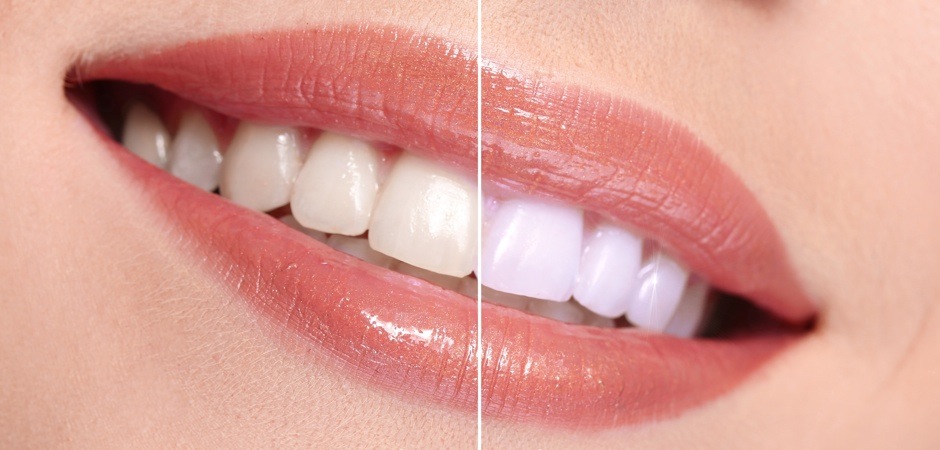Teeth Whitening
You want to restore your natural tooth shade or want to whiten your yellowish teeth, tooth whitening is the perfect option for you.
Restoration of the underlying, natural tooth shade is possible by removing the surface stains and calculus. This can be done by cleaning teeth through various oral hygiene methods. Calculus is difficult to remove without a professional clean.
In order to whiten the tooth shade, beaching is required. Techniques include bleaching pen,

bleaching strips, bleaching gel, and laser tooth whitening. Bleaching methods use carbamide peroxide or hydrogen peroxide. Increased sensitivity of teeth and irritation of the gums are some of the side effects of bleaching. Some people also develop an unhealthy obsession with whitening similar to body dismorphic disorder.
Causes for Tooth discoloration
Teeth may be darkened by forming surface stains (extrinsic staining) and tooth may be discolored (intrinsic staining) in few people. The following are a few causes of Tooth discoloration:
Causes of extrinsic staining include:
Dental plaque: Accumulation of bacteria such as Actinomyces species Calculus: If plaque left untreated it will eventually calcify and form a hard deposit on the teeth, particularly around the gumline.Tobacco: Tar in smoke from tobacco products forms a yellow-brown-black stain close to the necks of the teeth above the gumline
Certain foods and drinks: Foods including vegetables that are rich in carotenoids or xanthonoids can result in tooth discoloration.
Topical medications: Chlorhexidine binds to tannins. Consumption of coffee, tea or red wine can result in extrinsic staining.
Causes of intrinsic staining include:
- Dental caries
- Dental trauma
- Enamel hypoplasia
- Hyperemia
- Fluorosis
- Dentinogenesis imperfect
- Amelogenesis imperfect

Teeth whitening procedures is categorized into two types: Vital whitening is performed on teeth that have live nerves and non-vital whitening is done on a tooth that had root-canal treatment and no longer has a live nerve.